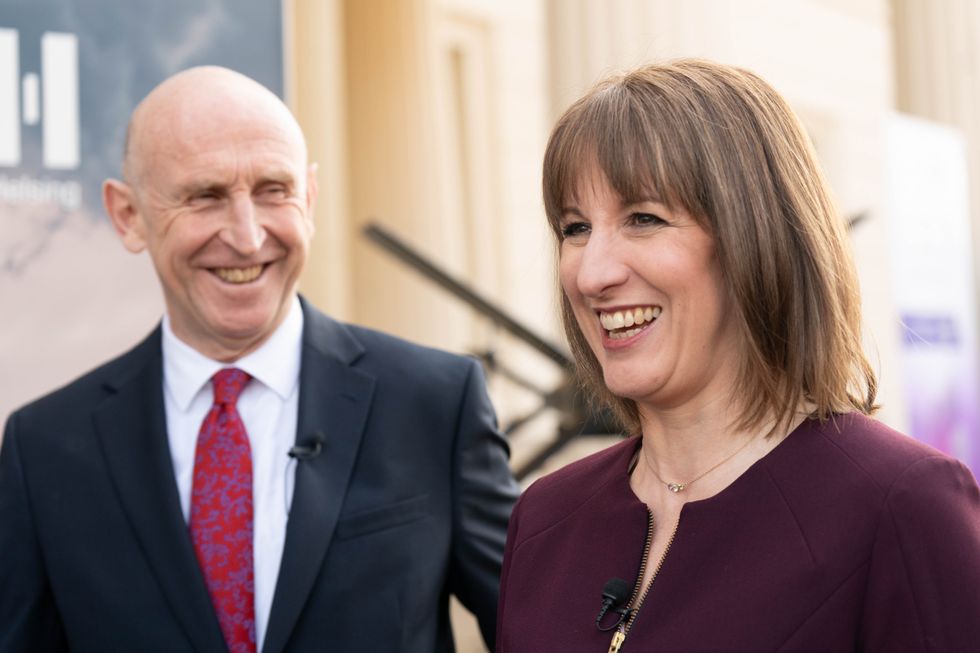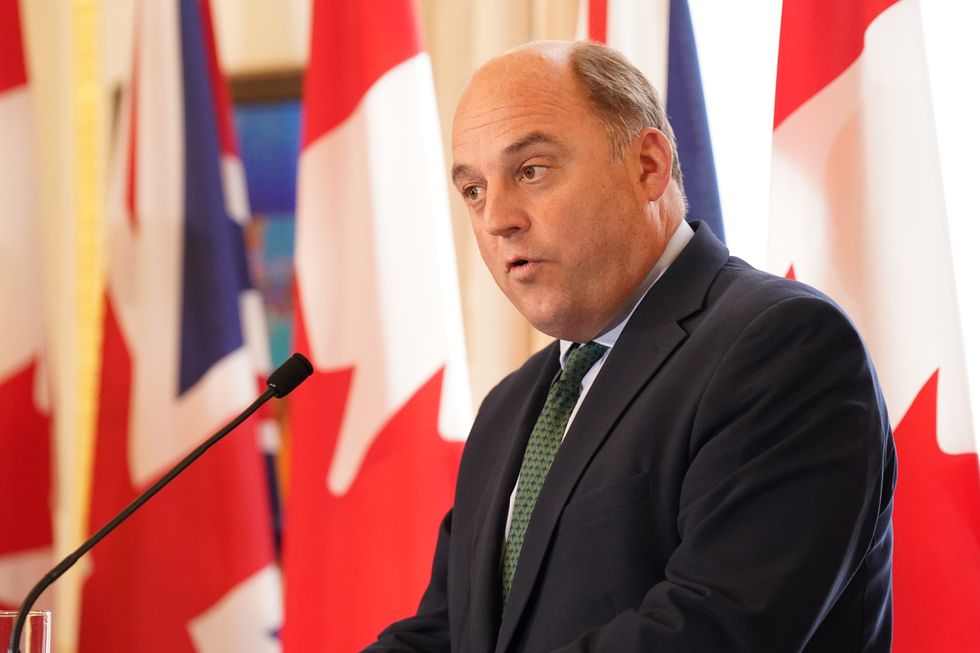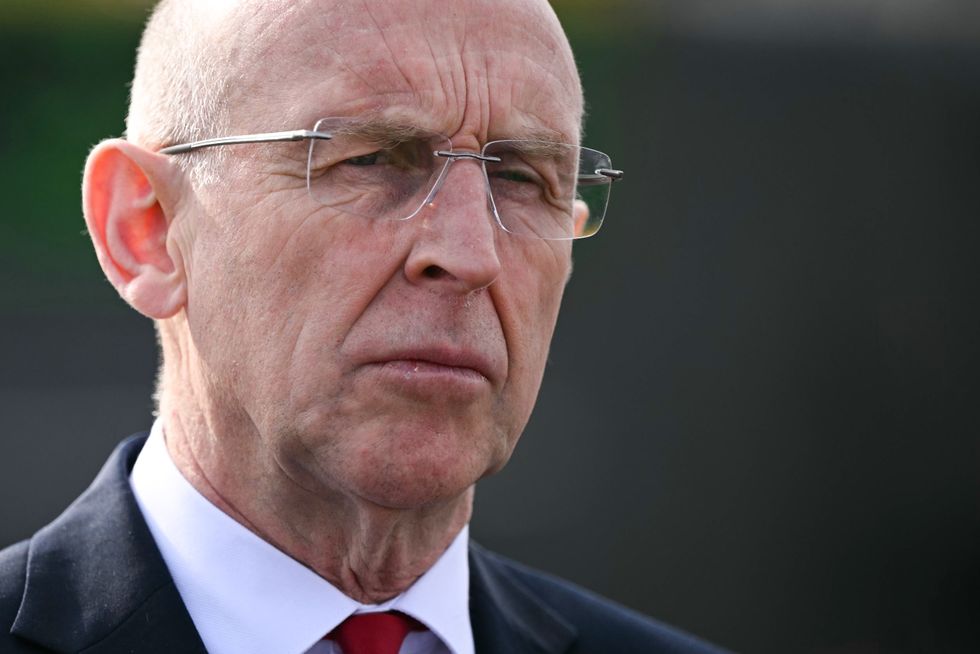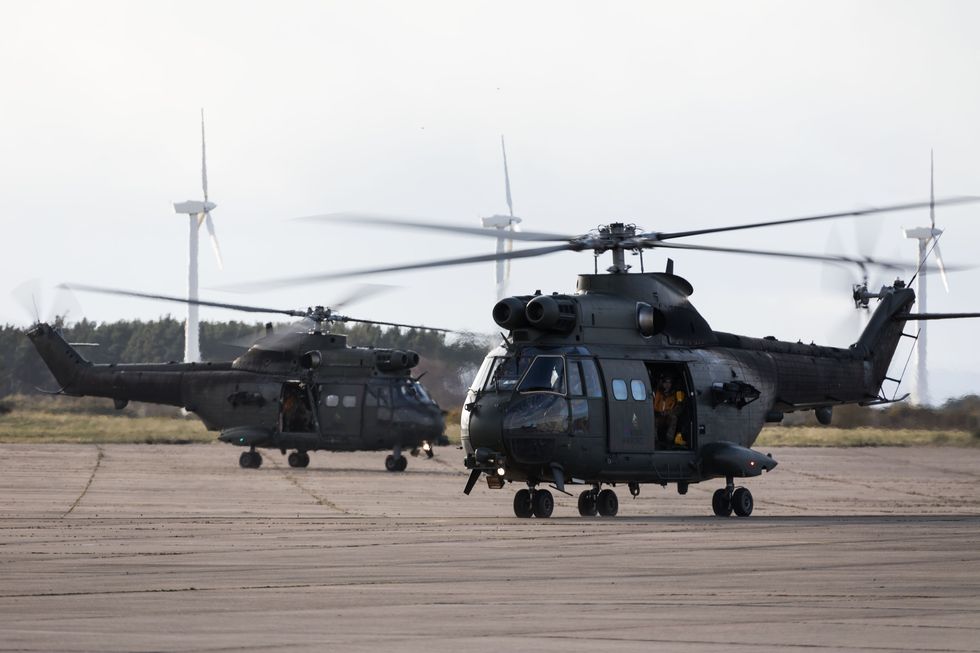'More spin that substance!' Labour's defence plan torn apart as John Healey told 'it fools no one'
WATCH: Rachel Reeves announces boost in defence spending to 2.5 per cent
Defence spending increases have been tipped to deliver positive economic impacts in local regions
Don't Miss
Most Read
Trending on GB News
Labour's plans to increase defence spending have been branded "more spin than substance" by a former defence secretary as Keir Starmer's Government aims to lift expenditure to 2.5 per cent of GDP by April 2027.
The Government has repeatedly described its plan to increase defence spending as "the biggest sustained increase since the Cold War" with current defence spending sits at around 2.3 per cent of gross national income.
However, former Defence Secretary Sir Ben Wallace and industry insiders have challenged this characterisation, describing the increase as "more spin than substance".
In her spring statement on Wednesday, Chancellor Rachel Reeves announced an extra £2.2billion for defence for the coming financial year.

Rachel Reeves announced an extra £2.2billion for defence for the coming financial year
PA
Reeves told MPs this was a further "down payment" on the Prime Minister's promise to reach the 2.5 per cent target.
The new money will help increase defence spending marginally from 2.3 per cent to 2.36 per cent of GDP.
The funding will be partially financed by cutting overseas aid, according to Government plans.
Sir Ben Wallace, the longest-serving Conservative defence secretary, has been particularly critical of the Government's approach.
"We are at the dawn of a new era of insecurity across the world," Sir Ben said.
LATEST DEVELOPMENTS:
Sir Ben Wallace warned 'we risk losing our credibility and leadership on defence amongst allies'
PA
He accused the Government of thinking "it is about spin and tinkering" while other European nations have "embraced a necessary culture change".
"It fools no one, and we risk losing our credibility and leadership on defence amongst allies," he added.
Defence insiders told Sky News that while any new money is welcome, the Government's claims are questionable given decades of cuts since the Soviet Union collapsed.
"This is just another sticking plaster that overlooks decades of underinvestment," a defence industry source told the broadcaster.
One military source described the additional £2.2billion as merely keeping defence on "life support".

Current defence spending, under Defence Secretary John Healey, sits at around 2.3 per cent of gross national income
PA
The situation only starts to improve marginally when the budget finally reaches 2.5 per cent of GDP.
The retirement of the Royal Air Force's entire Puma helicopter fleet this week highlights the contrast between spending announcements and operational reality.
The aircraft were taken out of service as part of a cost-saving plan announced in November.
Critics point to the fact that these helicopters, while old, were still airworthy and have been retired before replacements are ready.
While the UK aims for 2.5 per cent of GDP, Nato Secretary General Mark Rutte says allies must spend more than 3 per cent.
Donald Trump has pushed for Nato members to reach 5 per cent of GDP for defence.

Puma helicopters were taken out of service as part of a cost-saving plan announced in November
PA
This comes as Sir Keir Starmer has pledged to deploy forces to secure any ceasefire deal in Ukraine.
The commitment would put additional strain on already stretched armed forces as part of the "coalition of the willing".
Defence spending increases could have positive economic impacts, particularly for regions outside London and the South East.
Areas with military bases and manufacturing sectors may benefit most from additional defence investment.
"An increase in defence spending will probably favour regions outside London and the South East, helping areas with more military bases," notes economist Julian Jessop.








